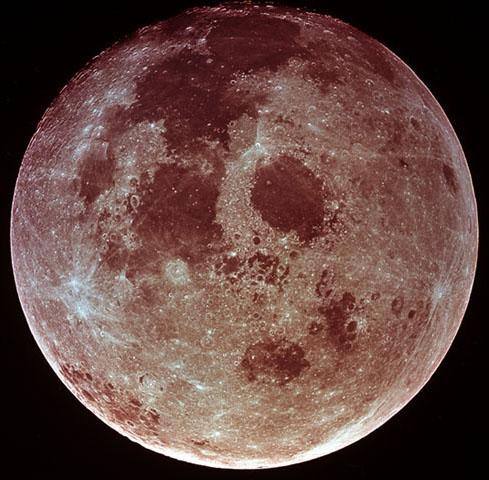PROVIDENCE, R.I. [Brown University] — There have been major discoveries about the moon recently, and Brown University faculty have been at the center of many of them.
In September 2009, Carle Pieters announced the discovery of traces of water on the lunar surface. The finding was published in Science and has reshaped scientists’ thinking about the moon as a dry and barren environment.
In October 2009, Peter Schultz was a key member of a NASA team that discovered water ice at the moon’s south pole by analyzing a plume of debris caused by the intentional crashing of a rocket into a lunar crater. The finding opens the possibility that the moon may hold enough water reserves to support a temporary human colony.
In July 2008, Alberto Saal reported in Nature the first evidence of water within the moon by analyzing volcanic glasses returned by the Apollo astronauts. Three years later, the team reported that the water content in lunar magmas in some places was as much as found in the Earth's upper mantle.
NASA took its first step toward returning humans to the moon with the June 2010 launch of the Lunar Reconnaissance Orbiter (LRO). Brown faculty, including James Head III and Schultz are heavily involved in the historic mission.
In addition, Brown has been chosen by NASA as a Lunar Science Institute, one of seven such centers nationwide. The virtual center, shared by Brown and the Massachusetts Institute of Technology, is called “The Moon as Cornerstone to the Terrestrial Planets: The Formative Years.” The center is charged with leading in-depth studies of the moon and cultivating the next generation of lunar scholars.
For additional information or to arrange interviews with Brown’s planetary geologists, contact Richard Lewis at (401) 863-3766 or by e-mail.

James Head III
Head has been a professor at Brown since 1973. He has been involved with NASA lunar missions since the Apollo program in the late 1960s, when he trained astronauts in geology, so they could identify specimens on the moon that would be of most interest of scientists.
Head is a member of the team in charge of the Lunar Orbiter Laser Altimeter (LOLA), an instrument on the LRO that will measure landing site slopes and lunar surface roughness as well as generate high-resolution, 3-D maps of the moon. More ...

Carle Pieters
Pieters is the lead author of the paper published in Science in October 2009 that reported signatures of water on the lunar surface. The finding drew significant attention in domestic and international media.
The moon water finding arose from Pieters’s involvement as principal investigator for one of two NASA instruments aboard the Indian moon orbiter Chandrayaan-1. The instrument, called the Moon Mineralogy Mapper, was a state-of-the-art imaging spectrometer that provided the first compositional map of the entire lunar surface at high spatial and spectral resolution.
Pieters, at Brown since 1980, is principal investigator of the Brown-MIT Lunar Science Institute. More ...

Peter Schultz
Schultz is an expert on planetary surface impacts and has studied meteorite and asteroid collisions on the moon, Earth, Mars and other bodies.
He is a co-investigator on NASA’s Lunar CRater Observation and Sensing Satellite (LCROSS) that in November found water ice at the moon’s south pole. His comments on the finding were reported widely in the media, including by the New York Times, the Associated Press and USA Today.
Schultz has taught at Brown since 1984 and has been studying the moon since the late 1960s; his most recent research is analyzing the impact that created the moon’s South Pole Aitken Basin. More ...

Alberto Saal
Saal specializes in analyzing the internal processes of the moon and Earth. He studied volcanic glasses returned by Apollo astronauts and discovered that they contained water, leading to his paper in Nature in 2008 that there is water within the moon. Three years later, the same team reported in Science that the content of water in some places within the moon rivals that found in the Earth's upper mantle. The finding may change the prevailing theory about the Moon’s origin as well as shed new light on the origin of water at the lunar poles. More ...

